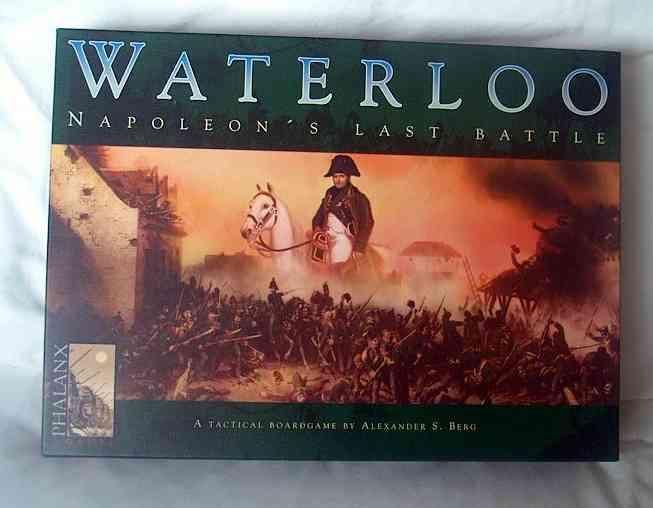Waterloo: Napoleon’s Last Battle (2002) Board Game
Waterloo: Napoleon’s Last Battle is a board game that simulates the historic Battle of Waterloo fought in 1815 between Napoleon Bonaparte and the Allied forces led by the Duke of Wellington and Gebhard Leberecht von Blücher. The game allows players to take on the roles of either Napoleon or the Allied forces, strategizing and maneuvering their armies to secure victory on the battlefield.
Game Components of Waterloo: Napoleon’s Last Battle
How To Setup Waterloo: Napoleon’s Last Battle
Setup involves placing the game board, deploying units according to historical formations, and setting up commander tokens. Each player (French, British, and Prussian) has specific starting positions and objectives. The tug-of-war score card and impulse track are also initialized to track the progression of the battle.
Gameplay Mechanics and Game Objective
Player Experience
**Waterloo: Napoleon’s Last Battle** offers a deeply tactical and strategic experience, requiring players to manage their units effectively and make use of commander abilities. The game mimics the historical battle closely, with each side needing to balance immediate objectives with the looming arrival of reinforcements (e.g., the Prussians for the French side).
Pros
Cons
Personal Thoughts on Waterloo: Napoleon’s Last Battle
This game is ideal for fans of historical wargames and those who enjoy deep strategic gameplay. It is particularly suited for players interested in the Napoleonic era and the Battle of Waterloo. However, it may not be the best fit for casual gamers due to its complexity and the time required to learn and play the game. For those willing to invest the time, **Waterloo: Napoleon’s Last Battle** offers a rich and rewarding gaming experience.
We are supported by our audience. When you purchase through links on our site, we may earn an affiliate commission, at no extra cost for you. Learn more.

